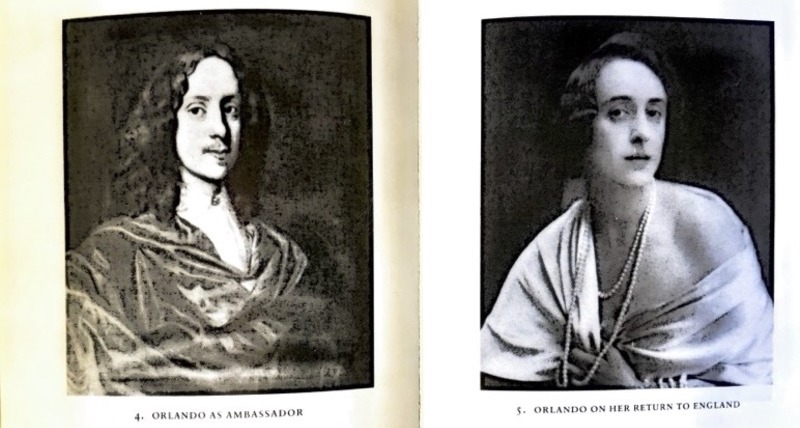Entertainment
Exploring the Intersection of Text and Image in Modern Fiction

The relationship between text and imagery in literature has gained increasing attention, as authors blend photographs with narrative to create a richer reading experience. This dynamic interplay raises questions about how readers engage with stories that simultaneously demand both visual and textual interpretation. Linguist David Crystal notes that once individuals learn to read, they tend to view letters as mere symbols rather than graphic marks. When authors include photographs, they invite readers to navigate the complexities of looking and reading, altering the conventional flow of narrative.
The challenge of integrating photographs into fictional narratives introduces a potential conflict with the suspension of disbelief. As John Berger posits in his introduction to I Could Read the Sky, co-authored by Timothy O’Grady and photographer Steve Pyke, the combination of text and image is fruitful precisely because it highlights their differences. Berger states that the words and pictures “never say the same thing,” and this divergence is essential for their coexistence.
Visual Narratives: A Tour Through Fiction
Exploring notable works, WG Sebald’s The Rings of Saturn (1998) exemplifies how photographs can evoke both nostalgia and disorientation. The narrative recounts a solitary walk through Suffolk, interspersed with photographs that appear to capture the essence of the journey. Some images resonate with readers familiar with British culture, such as the view outside Lowestoft station, while others, like the model of the Temple of Jerusalem, feel strikingly surreal. As readers progress, they begin to perceive the interconnectedness of the images, which range from scenes of desolation to reflections on historical events.
Another compelling example is found in Sebald’s Austerlitz, where the opening lines introduce eyes in darkness. The eyes of various nocturnal creatures lead the narrator into a contemplative exploration of observation and perception. This interplay between visual and textual elements serves to deepen the reader’s engagement, compelling them to reflect on the act of looking.
The inclusion of photographs can also reveal underlying themes within narratives. In Amy Sackville’s Painter to the King (2018), the titular King expresses frustration at constantly seeing himself through the eyes of the court painter, Diego Velazquez. The photographs in the novel amplify the tension created by the gaze of the subjects, further complicating the relationship between viewer and viewed.
The Impact of Historical Context and Personal Experience
Terry Pitts’ Vertigo blog sheds light on the concept of “photo-embedded literature,” providing insights into how photographs have been historically integrated into books. The first mass-produced volume to feature photographic illustrations, William Henry Fox Talbot’s The Pencil of Nature (1844), showcased empty Paris boulevards, providing readers with visual contexts that were previously unimaginable. The absence of pedestrians in these early photographs serves as a metaphor for the fleeting nature of time and memory.
This theme resonates in surrealist literature as well. André Breton’s Nadja (1928) combines erratic narrative with photographs that often depict mundane settings, such as empty café tables. This contrast creates a sense of disconnection, challenging readers to find meaning in the juxtaposition of the thrilling text and the seemingly banal images. Caleb Femi’s Poor (2020) similarly contrasts stark exterior shots of urban landscapes with intimate, lively depictions inside, creating a dialogue about the dichotomy between public and private spaces.
Notably, Virginia Woolf’s Orlando (1928) employs photographs to parody the conventions of biography. The images, which include an Elizabethan boy and a modern woman, mock the idea of accessing the past, reinforcing the notion that history is subject to interpretation and imagination. Woolf’s playful integration of staged and found photographs underscores her commentary on gender and inheritance.
In contemporary literature, the role of photographs continues to evolve. Valeria Luiselli’s Lost Children Archive (2019) uses photographs taken by a child narrator to explore themes of documentation and migration. The stark contrast between the innocent lens of a child and the harsh realities faced by migrant children in similar landscapes highlights the profound impact of visual storytelling. Similarly, Esther Kinsky’s River (2018) uses photography to evoke a sense of nostalgia, as the narrator grapples with memories linked to family and personal history.
The integration of photographs in literature not only enriches the narrative but also invites readers to engage with complex themes of identity, memory, and perception. As authors continue to experiment with this fusion of text and image, the possibilities for storytelling expand, offering fresh insights into the human experience. The challenge remains for readers to navigate this multifaceted landscape, discerning the unique contributions of both visual and textual elements in shaping their understanding of the narrative.
-

 Business1 week ago
Business1 week agoIconic Sand Dollar Social Club Listed for $3 Million in Folly Beach
-

 Politics1 week ago
Politics1 week agoAfghan Refugee Detained by ICE After Asylum Hearing in New York
-

 Health1 week ago
Health1 week agoPeptilogics Secures $78 Million to Combat Prosthetic Joint Infections
-

 Lifestyle1 week ago
Lifestyle1 week agoJump for Good: San Clemente Pier Fundraiser Allows Legal Leaps
-

 Science1 week ago
Science1 week agoResearchers Achieve Fastest Genome Sequencing in Under Four Hours
-

 Health1 week ago
Health1 week agoResearcher Uncovers Zika Virus Pathway to Placenta Using Nanotubes
-

 World1 week ago
World1 week agoUS Passport Ranks Drop Out of Top 10 for First Time Ever
-

 Business1 week ago
Business1 week agoSan Jose High-Rise Faces Foreclosure Over $182.5 Million Loan
-

 Science1 week ago
Science1 week agoMars Observed: Detailed Imaging Reveals Dust Avalanche Dynamics
-

 Entertainment1 week ago
Entertainment1 week agoJennifer Lopez Addresses A-Rod Split in Candid Interview
-

 World1 week ago
World1 week agoRegional Pilots’ Salaries Surge to Six Figures in 2025
-

 Top Stories1 week ago
Top Stories1 week agoChicago Symphony Orchestra Dazzles with Berlioz Under Mäkelä









